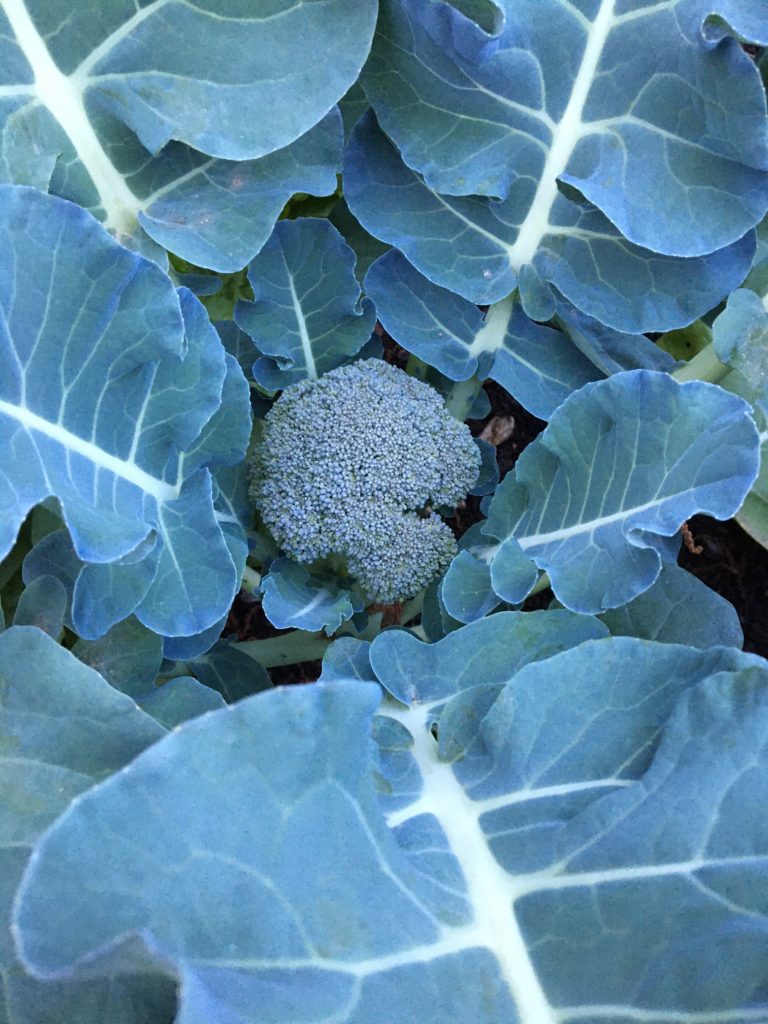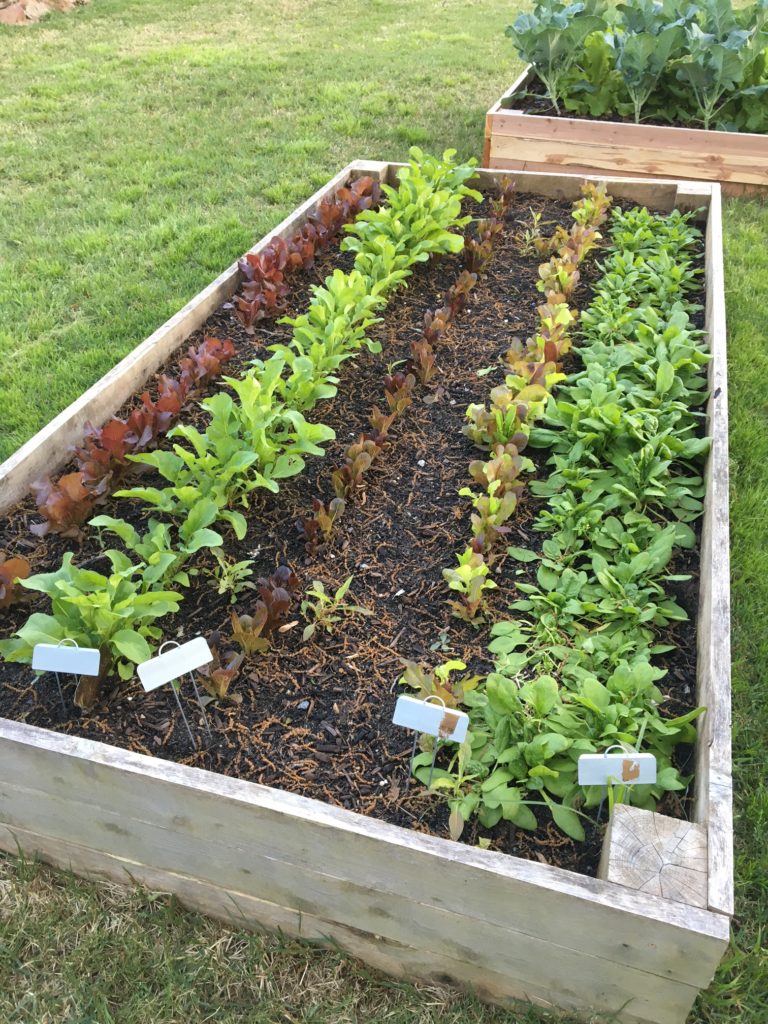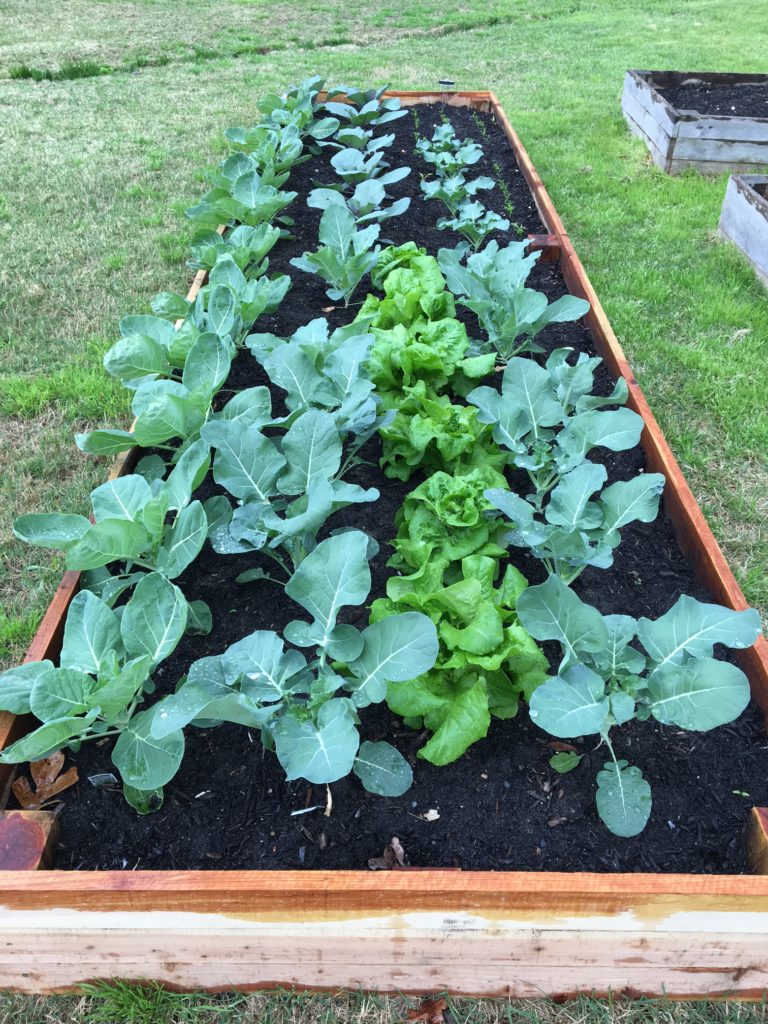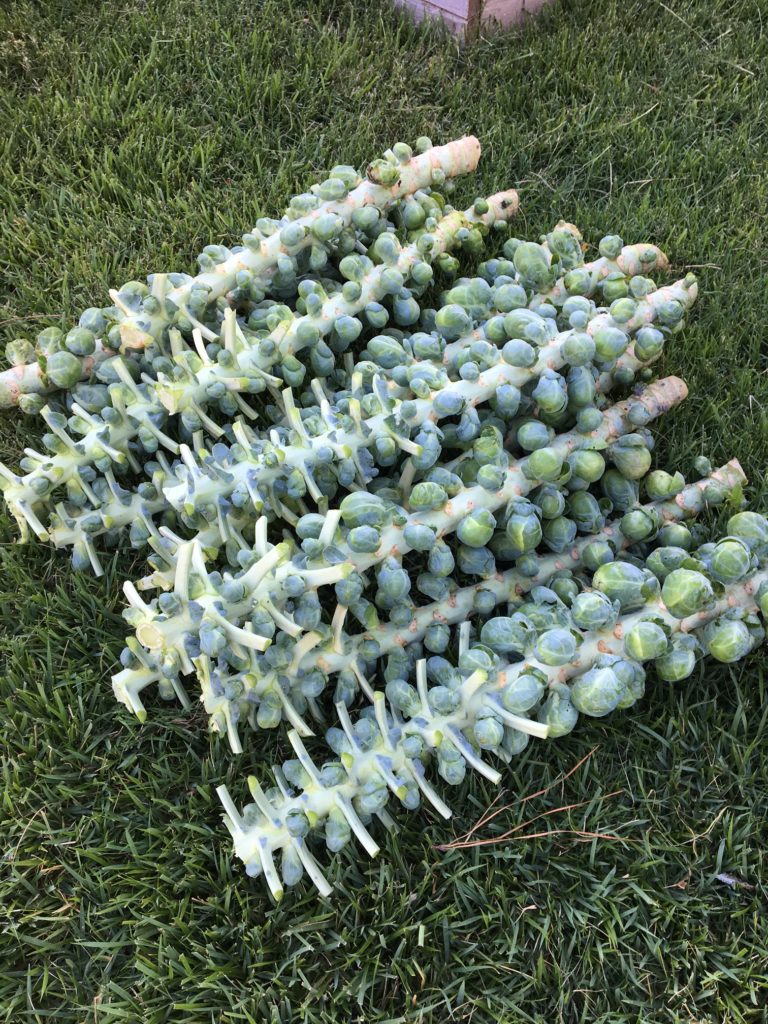Cool Season Veggies

When to Plant
Timing is tricky; Trey gives some tips on timing under each heading. You can start seeds indoors this month (February) and plant seedling too, if you are willing to protect them as needed. As a rule of thumb, the plants resulting from directly sowing seeds will be more acclimated and be able to withstand colder temps without much damage. However, because soil temps are still low in February and this time of year is usually pretty wet, the seeds can rot before sprouting.
We suggest one of two plans; either start your seeds for these cool season crops indoors now then plant outside between by mid-March or purchasing seedlings or transplants and plant outside by mid-March. This is a general rule of thumb; you can get more specific by looking at the days to maturity from seed sowing numbers in parenthesis by each crop heading below. Crops like lettuce have a short maturation time and can be started later; brussels sprouts need to get growing soon to beat the heat.
Another general rule of thumb is that seedlings shave off around 3 weeks of this time. For example, if you plant cool season seedlings in mid-February, they will mature faster than if you are just now starting seeds. Timing depends a bit on weather, your willingness to protect young plants when temps are low (more on that below as well), and whether you are trying to get several rounds of your crop before the weather heats up.
How Low (and High) Can They Go
Notice that these plants are called cool season not COLD season! As we mentioned above, there is a limit to how low they can go. A short dip under freezing temps is not a problem. You will need to cover your cool season veggies if we are scheduled for prolonged amount of time with temperatures mid-20’s and below. For single plants, you can cover with a container of some sort and then one of our N-Sulate frost blankets. If you are growing in a how, use a row cover to easily cover and uncover your plants as needed.
So what is too high? We mentioned bolting above; this refers to when a vegetable plant rapidly grows a flower stalk and sets seed, making them inedible. This is a natural process that happens as a result of longer days and warming soil temperatures.
Successfully grown cool season crops is a balance of setting them out early enough to get a good crop before temperatures heat up. Each year is slightly different because weather is variable.
Where to Plant
If you haven’t had your soil analyzed in a few years (or haven’t ever), late winter is a great time to do so. Our Good Earth SoilKits can be purchased here at Good Earth, and include a postage paid envelop. Results will be emailed to you in a few weeks and the recommendations are concise and easy to understand. Read more about these Soil Kits here. You may need to adjust soil pH or certain macro or micro nutrients for best growth.
In general, these plants will grow best in soil that drains well and contains organic matter. Plant cool season vegetables in an area that gets at least 6 hours of direct sun.
Are you picturing nice long rows of veggies and talking yourself out of planting because the only space like that available is directly in your front yard? Scratch that picture out of your head! You can plant small groupings of vegetables in your sunny landscape spots, or plant them in a container. You can keep this simple and grow into a bigger garden later on. Who knows, once you harvest your first veggies of the season, you may be willing to dig up that front lawn after all!
Watering
Although you might need to add supplemental water, we often get enough rainfall during these spring months to sustain cool season vegetables. If temps are getting very low and we haven’t had rainfall, water them well. Veggies grown in pots will require more supplemental water than those grown in ground.
Pest Issues
We will have a separate post about cool season vegetable pest issues but in case you forget to check back, just know that cabbage worms are the big one and they are can be controlled with natural products like Spinosad and Bacillus thuringiensis (BT).
Trey’s Tips
My name is Trey and I work here at the Good Earth Garden Center. I’ve been gardening in central Arkansas for 25 years. The information contained here is going to primarily be a compilation of stuff I’ve tried in my garden and I’m going to try to include some photos from my garden of some of the veggies I talk about below.
Let’s have a talk about greens and all those other cool season veggies we know and love. Growing up our parents always told us to eat nasty things like broccoli and spinach and brussels sprouts. As kids we hated all that stuff but as adults we are realizing what we missed out on some delicious food! Greens and cool season veggies have gained enormous popularity as Americans have sought to eat healthier. This rise in popularity has led to a lot of people wanting to know how they can grow their own cool season veggies in their backyard. So much of the information found online doesn’t cover how to grow cool season crops in the south. The information below will be time proven methods to growing cool season crops in a more southern climate particularly Arkansas.
Lettuce (45-65 days from seed sowing to maturity; variety dependent)
Hands down the most popular cool season plant people want to grow in their home garden is going to be lettuce. Lettuce forms the basis for the ever popular salad and is used as a topping for many of our favorite foods like tacos and sandwiches. In Arkansas lettuce is easy to grow. The first step is soil prep. Lettuce need a well drained soil that is full of nutrition. A soil blend heavy on compost is what they prefer. The key part to having success in Arkansas is timing. Many people tend to start lettuce too late in the season. If you are using transplants you can plant all the way until late April. But if you are directly sowing seeds you have until about the first to second week of April here in Arkansas. Once it consistently gets over 75 degrees for a daily high lettuce will start to grow thin and will bolt. Bolting is the act of producing flowers. It’s not a desirable trait in cool season veggies. Lettuce can be planted starting in late February but it is recommended to keep a row cover over it to protect it from frost. As far as varieties stick to any that have a maturity date of 70 days or less. A lot of the leaf lettuces and bib lettuces tend to do the best in Arkansas.
Many gardeners have the best success with lettuce if they treat it more like a microgreen. I know in my personal garden I harvest most of lettuce at about 50-75% maturity. Yes it’s going to be smaller than what you get in the grocery store but you will have great flavor and your lettuce will be nice and crisp!
Spinach (42 days from seed sowing to maturity)
Spinach is a fantastic cool season veggie to grow in Arkansas. Many of the varieties sold tend to handle the heat a lot better than varieties of yesteryear. Bloomsdale Long Standing has been shown through trials to be the most heat tolerant variety of spinach. It also produces lots of large leaves and will typically hold up until late June here in the Arkansas heat. There are also tons of other spinach varieties that are best grown and treated like microgreens. Small spinach leaves tend to be tender and tasty. Follow the same soil recommendations for spinach as what is listed for lettuce.
Greens (40-55 days from seed sowing to maturity; variety dependent)
I’m going to use the term “greens” to encompass things like kale, mustard greens, and what are commonly sold as “spring or salad mixes.” Many of these things are best grown as microgreens in the spring and harvested smaller as they are less likely to bolt and more likely to stay tender. One of the best greens mixes that can be grown here in Arkansas is called Mesclun Mix. This mix has a wide variety of salad greens that can range from sweet to spicy in flavor and this mix produces prolifically. For Kale stay away from any large leaf varieties as they tend not to get as big as advertised in our warmer climate. Follow all the same planting instructions as lettuce for greens.
Broccoli (50-75 days from seed sowing to maturity; variety dependent)
That vegetable that all of us grew up hating and I still dislike as an adult is one of the most popular cool season crops around. While broccoli is easy to grow a lot of people have limited success with it in Arkansas due to timing. Like lettuce broccoli needs to be planted from late February to mid April to have the best results. The edible part of broccoli is called a floret. While many broccoli varieties are advertised as having large florets, it’s best in Arkansas to harvest when they are about four to six inches across. They are less likely to bolt and will have the best flavor. Select a variety that matures in 75 days or less. If planting in April choose a variety that matures in approximately 50 days. This is a plant that is best planted from transplants over seed and likes a rich compost heavy blend.
Cauliflower (75 days from seed sowing to maturity)
Cauliflower has seen a rise in popularity in recent years. What many people don’t know is this plant is easy to grow in your own backyard. Most cauliflower varieties are around 75 days to maturity and love a soil rich in compost. Cauliflower seems slow to mature but their florets are covered by leaves during growing. Once those leaves open the florets quickly increase in size and are typically ready for harvest in about two weeks. Cauliflower does best when started from transplants.
Brussels Sprouts (95- 110 days from seed sowing to maturity)
The one vegetable that has seen a massive resurgence in popularity is the unappreciated brussels sprout. This is a veggie that is a bit more complicated to grow but very rewarding when harvest time comes. Brussels sprouts do best if they are started anytime from early February to mid March. They rarely are successful if started later than mid March. Brussels sprouts take longer to mature than most other cool season veggies. It’s why starting them so early is important. They like to be planted in a loose mix rich in compost.
Why Organic Matters
Unlike many other veggies, cool season veggies absorb a ton of nutrition from the soil. If it is in the soil they will take up into their vascular system and hold it. Things like heavy metals and waste and soil toxins will get absorbed into the plant. This is why it’s so important to have a rich compost mixture to plant them in and to use organic sprays and fertilizers. When I plant my cool season plants I like to use Jump Start and Espoma Garden-Tone fertilizer. This helps give my plants the nutrition they need while also making sure my plants are as safe as possible to eat.
Apply these natural, granular fertilizers at least 3” from plant crown (where soil meets plant shoots). You can also supplement with liquid fertilizers. Always follow application instructions and rates.
Hopefully the above information is helpful to all you aspiring gardeners wanting to try growing cool season vegetables in Arkansas! Remember you can grow these veggies anywhere. In the ground, in pots, or in raised beds they are happy anywhere as long as they have plenty of sun, water, and rich compost blended soil.


